#biophilia project
Text
I will be making a new Advent Calendar this year! Every day a new artistic post.
🌍 The Immune System of Earth ✨
An unusual theme for Xmas, yet, very fitting to the time we are living through right now.
If you know somebody who‘d enjoy this theme, please forward this channel!
Click through to the Telegram Channel.
Have a Peaceful Advent! 🕯️
🍀 Robin
#advent#advent calendar#xmas 2023#xmas#christmas 2023#christmas#mother earth#gaia#mother gaia#immunesystem#artist#art#art project#protect the environment#protect the earth#planet earth#environmentalism#environment#enviroment art#biophilia#biophiliac#biomimicry#climate change#ecology#ecosystem#forestbathing#hippilife#lgbtq community#forest#ocean cleanup
2 notes
·
View notes
Text
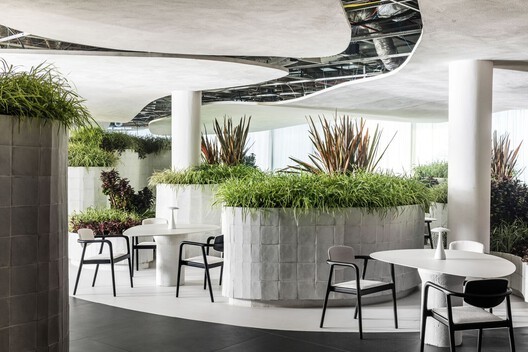
0 notes
Photo
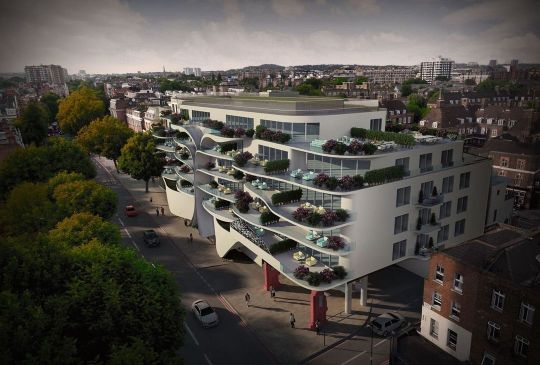
Unique and in-keeping, a THINK NATURE project in Central London that lends its elegance to the surrounding area. #project #london #residentialdesign #residentialarchitecture #residential #apartment #apartmentdesign #development #architecturedesign #architecture #architects #luxurydesign #biophilicdesign #biophilia #thinknature #londonproperty #londonarchitecture #londonrealestate #luxuryhomes #luxurylistings #primelocation #design #terraces #gardendesign https://www.instagram.com/p/CgMQ7B4oRAN/?igshid=NGJjMDIxMWI=
#project#london#residentialdesign#residentialarchitecture#residential#apartment#apartmentdesign#development#architecturedesign#architecture#architects#luxurydesign#biophilicdesign#biophilia#thinknature#londonproperty#londonarchitecture#londonrealestate#luxuryhomes#luxurylistings#primelocation#design#terraces#gardendesign
1 note
·
View note
Text

15 May 2022: CHIRP CD Blowout Sale.
CHIRP is the Chicago Independent Radio Project, and my good friend Owen has been associated with it for years. The station announced a fundraising CD sale, consisting of donations and other unwanted acquisitions the station has accumulated. This event brought to mind the fabled “Crap-a-Record” charity sales I attended in days of yore (my brother coined that term, crap-a-record), first when I lived in Champaign, Illinois, and then in my earliest years in Chicago there was an ALS charity sale out in the parking lot of Old Orchard Mall in Skokie. At these sales, everything was generally a dollar, and the CHIRP CD Blowout had the exact same kind of setup: tables in a parking lot, no guarantees, garbage filed right alongside gems, nothing alphabetized, with most everything a dollar.
I got to the event before it began because I traveled there with Owen, and he had to set up audio equipment as he was going to be the first of several DJs to spin tunes while shoppers browsed the discs. Within five minutes of the sale beginning, it started to rain. The rain was intermittent, but people just shopped right through the passing storm. I went inside during the worst of it; I knew there would be plenty more CDs when I got back out there. When a box started running low, they’d replace it with another box full of discs. It’s a shame about the rain, because I saw an otherwise mint two-disc reissue of Bob Mould’s Workbook get ruined by the weather. I would have snapped that up in a second had it been intact.
The event was held at, of all things, a Christian brewery. I suppose it was there because the radio station is immediately across the street. I’ll admit the facility was beautiful, not to mention picturesque as it is on a nicer stretch of the Chicago River, but with all the beers named after biblical references and the general religious vibe I doubt I’ll go back unless there is another music blowout of some sort.
At the event, CHIRP handed out totebags, and I basically looked at every box, throwing anything in my totebag that I had even a passing interest in. This can feel a bit like a game show, and I ended up with things I would never have purchased at regular used-CD prices. I’m going to start out with a couple of pictures and then give an inventory of everything and say a few words about why I got each one.
Below we have the 50 items that are in good enough shape that I’d be willing to add them to my permanent collection (if I end up liking them, that is; I have no doubt some of these will eventually get donated or traded).

Here are the 10 discs that wound up being in terrible condition, scratched beyond what I will tolerate. In the moment, there was no chance to stop and check condition. And as the money went to a non-profit, I don’t consider it money thrown away even though these discs will probably go to the trash can. They’re not good enough to be sold, and no one really wants to receive a donation of destroyed CDs.
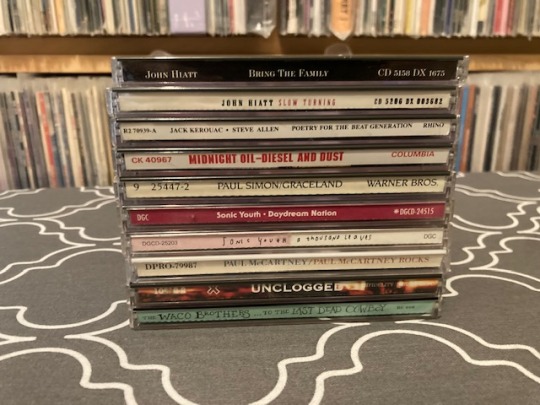
Here’s the lineup of the 50 things that have a chance of sticking around. I plan to process these by listening to roughly one per week beginning in January 2023.
1. Ramblin’ with Mose, Mose Allison (Prestige, 1962)—I have a dozen or so albums by the jazz pianist/vocalist, and I always enjoy them.
2. Mama’s Gun, Erykah Badu (Motown, 2000)—I’d never be interested in this were it not, reportedly, one of my girlfriend’s favorite albums. That doesn’t really compute to me and I decided I needed to find out what this sounds like. A top nominee to be donated after I hear it.
3. Shine Bright, Marcia Ball (Alligator, 2018)—I already own one album by this Louisiana blues pianist/vocalist and it’s really not my bag; this wound up in my stack simply because Ball is familiar to me and I always like having two albums by somebody instead of just one. But this could easily get donated.
4. Biophilia, Bjork (Nonesuch, 2011)—There was a moment where I decided I’d buy every Bjork album and do a catalog study. That effort petered out quickly, but for a buck I’ll take another one, and its glossy digipak was miraculously in pristine shape.
5. Booth and the Bad Angel (Mercury, 1996)—Because of a deep dive I recently took into the Twin Peaks universe I’ve actively been wanting this, a collaboration between David Lynch collaborating composer Angelo Badalamenti and Tim Booth, frontman of the group James.
6. Bottle Rockets/The Brooklyn Side, The Bottle Rockets (2013 Bloodshot twofer reissue of 1993 & 1994 East Side Digital releases)—This Missouri group fits decently with my general interest in Americana, and I recall a good couple of singles from my days in university-radio programming.
7. Fat City, Shawn Colvin (Columbia, 1992)—I was a Colvin fan in college and programmed this album (her second) at the radio station, and went to see her perform twice while she promoted it. I’ve always wanted a copy and never made it happen until now.
8. A Few Small Repairs, Shawn Colvin (Columbia, 1996)—I liked “Sunny Came Home” from this, Colvin’s fourth album, so much that I bought the cassette single, something I almost never did. I never felt like taking a plunge on the album, but it’s an easy purchase for a buck, especially when already buying Fat City.
9. Walking in London, Concrete Blonde (IRS, 1992)—I’d rather have bought Bloodletting, its 1990 predecessor, which I owned once before and traded, but I figure I need something by the band back in my collection, and here it is.
10. Cracker (Virgin, 1992)—I’m not particularly fond of this album or this band, and I’ve owned it and sold it before, but for a buck I’ll take it back. It’s a staple of my college years even though I vastly prefer David Lowery’s previous band Camper Van Beethoven.
11. Greatest Hits, Devo (Warner Bros., 1990)—I’ve got a zillion Devo albums, mostly on vinyl; why not grab their hits CD for a dollar?
12. The Dance, Fleetwood Mac (Reprise, 1997)—I own every other Fleetwood Mac album of the Buckingham/Nicks era, so why not grab this live album? It can’t be that bad.
13. Us, Peter Gabriel (Geffen, 1992)—I’ll never find a mint-condition UK vinyl copy of this like I owned in college and stupidly sold, so it’s time I accept that and get this album back even if it’s via a dollar CD.
14. The Benny Goodman Story (MCA CD abridged reissue of 1964 Decca release)—The epitome of “I grabbed anything that held even passing interest”; I don’t have any Goodman, and here’s a 20-track selection. Why not.
15. Get the Gore, Gore Gore Girls (Bloodshot, 2007)—I could probably donate this gimmicky band’s album right now and never think of it again, but I grabbed it initially because I once saw them open for The Waco Brothers and thought it would least be worth the 40 minutes of hearing it once.
16. Go to Heaven, Grateful Dead (Arista, 1980)—I own a lot of Dead albums, but never owned this one.
17. All Things Must Pass, George Harrison (2001 Parlophone reissue of 1970 Apple release)—This is the dopey one with the colorized cover. In very nice shape for $2, even though I have multiple other copies of the album? Of course.
18. Walk On, John Hiatt (Capitol, 1995)—I’m in the middle of a John Hiatt catalog study and I need this. I’ve not heard it since checking it out at the library when it was new.
19. Celebrity Skin, Hole (DGC, 1998)—A late-’90s staple (just meaning it was ubiquitous at the time), and I enjoy Hole now and then. I don’t hold any high expectations, but for a dollar I’ll let it in the door.
20. Night and Day, Joe Jackson (A&M, 1982)—A favorite and I’ve only owned it on vinyl before this.
21. Blue Earth, The Jayhawks (Twin/Tone, 1989)—The only Jayhawks album I didn’t own. Easy buy.
22. Greatest Hits Volume I & Volume II, Billy Joel (Columbia, 1985)—I own this on vinyl, but there’s gonna come a day I’ll be glad to have some of his hits I can throw on the iPod for easy access. Maybe.
23. Fever in Fever Out, Luscious Jackson (Grand Royal/Capitol, 1996)—Another post-college ’90s staple I don’t care about, but will find out about for a dollar.
24. Deserted, Mekons (Bloodshot, 2019)—I used to intentionally buy this band on vinyl and CD; I’ve not done that for a while, but for a dollar I’ll do it.
25. Offramp, Pat Metheny Group (ECM, 1982)—I generally like Metheny; I saw him perform live in 1988 or 1989 and somehow haven’t owned any of his albums (not counting the soundtrack to The Falcon and the Snowman, which I bought for a Bowie song).
26. The Best of Morphine, Morphine (Rykodisc, 2003)—I like Morphine and this compilation has some songs unavailable elsewhere, plus it’s in an intact and pristine green Ryko case, worth a dollar by itself.
27. Falling Out, Peter Bjorn & John (Hidden Agenda, 2005)—I have this on vinyl but my other PB&J CDs will feel less lonely with a copy of this next to them.
28. Fear of a Black Planet, Public Enemy (Def Jam, 1990)—A classic and I’m happy to not have to play my valuable original vinyl when I want to hear it.
29. Blood Sugar Sex Magik, Red Hot Chili Peppers (Warner Bros., 1991)—I can’t stand this band, but I apparently want to hear this thing one more time. I owned a heavily edited vinyl promo during my radio days and if I’m gonna own this I’d rather have that back, but it sells for hundreds. I look forward to getting rid of this once I’ve heard it again.
30. The King & I, The Residents (Enigma, 1989)—I’ve got a billion Residents and have never heard this one, which I’ll gladly do for a dollar.
31. Hot Rocks 1964-1971, The Rolling Stones (1986 ABKCO reissue of 1971 London release)—Another thing I own on vinyl but am happy to have a CD copy of for easier access.
32. Sweet Oblivion, Screaming Trees (Epic, 1992)—Frontman Mark Lanegan died recently, so he’s been on my mind, and I’ve never owned this ’90s staple.
33. Night Moves, Bob Seger and the Silver Bullet Band (Capitol, 1976)—I sense a Seger deep dive in my future and it’ll be good to have this in an iPod-friendly format.
34. Against the Wind, Bob Seger and the Silver Bullet Band (Capitol, 1980)—See above, though unlike Night Moves I do not own this on vinyl.
35. Blue Boy, Ron Sexsmith (SpinArt/Cooking Vinyl, 2001)—I liked his debut album a lot at the time and haven’t kept up with him at all; for a buck I’ll find out what he was up to 20 years ago.
36. Exit Strategy of the Soul, Ron Sexsmith (Yep Roc, 2008)—See above.
37. Negotiations and Love Songs 1971-1986, Paul Simon (Warner Bros., 1988)—A lengthy solo Simon hits comp for a dollar? Sure.
38. A River Ain’t Too Much to Love, Smog (Drag City, 2005)—Slowly making my way to a complete collection of Bill Callahan’s discography, at least up to the point where he did that awful covers album with Will Oldham.
39. Play, Squeeze (Reprise, 1991)—I owned this in college and since reinvigorating my Squeeze interest after seeing them perform a few years ago, I’ve been wanting it back.
40. We’ll Never Turn Back, Mavis Staples (Anti-, 2007)—I don’t buy every Mavis Staples album, but I buy a lot of them, and with Ry Cooder producing I’m happy to snag this; I didn’t start buying her music until the album that came after this one.
41. Blast from Your Past, Ringo Starr (Parlophone, 1976)—After a few beers, if a guy across from you says “Oh wow, anyone want a Japanese Ringo album?” you just holler “I’ll take it!”
42. Ten Summoner’s Tales, Sting (A&M, 1995)—I can tolerate Sting to a degree, and I had a promo copy of this in college. For a dollar I’ll see if I need to trade it again.
43. True Stories, Talking Heads (Sire, 1986)—I have very little Talking Heads on CD, and I’m happy to obtain it when it’s a dollar.
44. 89/93: An Anthology, Uncle Tupelo (Legacy/Columbia, 2002)—I’ve never loved this pre-Son Volt/pre-Wilco group, but for a dollar I’ll take a clean digipak copy of it.
45. Life in Perspectives of a Genuine Crossover, Urban Dance Squad (Arista, 1991)—This had to be the beer talking; if I’m going to buy an Urban Dance Squad album (we played the band at my university radio station), it should be their debut, but for a dollar I guess I wanted a nostalgia trip.
46. Lucinda Williams (1998 Koch reissue of 1988 Rough Trade)—I’ve never owned this one, though I have a dozen of her others, and this copy has six bonus tracks.
47. Songs in the Key of Life, Stevie Wonder (Motown, 1976)—Another landmark thing I have on vinyl but am happy to obtain a cheap CD copy of.
48. Live in Los Angeles, X (2005 Shout Factory release of 2004 performance)—I’ve never really considered this part of the proper X discography, but for a dollar I’m sure it’s wortwhile.
49. Afterburner, ZZ Top (Warner Bros., 1985)—I’ve obtained enough ZZ Top lately, what’s another one for a buck?
50. Deadicated, various (Arista, 1991)—I’ve always wanted a copy of this Grateful Dead tribute album, specifically so I could get the Elvis Costello version of “Ship of Fools.”
Now, a bit about the 10 discs that are too trashed to keep:
1. Bring the Family, John Hiatt (A&M, 1987)—I’ve long owned this on vinyl, but needed a CD copy for my ongoing Hiatt catalog study. I’ll try ripping this to iTunes before discarding.
2. Slow Turning, John Hiatt (A&M, 1988)—Sea above.
3. Poetry for the Beat Generation, Jack Kerouac & Steve Allen (1990 Rhino reissue of 1959 Dot release)—On May 8, a week before this CD sale, I finished Big Sur, my first Jack Kerouac book, so he was on my mind. This disc is the most destroyed of them all; it looks like someone used it to sand roof shingles with. In good shape, it’s not cheap; Discogs’ cheapest copy is $20. The cheapest copy of the original LP is $5000. I doubt this disc would even import to iTunes.
4. Diesel and Dust, Midnight Oil (Columbia, 1987)—Another I’ve long had on vinyl and wanted for the iPod.
5. Graceland, Paul Simon (Warner Bros., 1986)—See above.
6. Daydream Nation, Sonic Youth (Engima, 1988)—I’ve long owned this on vinyl, but the only CD copy I have is an expanded, two-disc reissue, and I wanted a plain-old original CD. Whereas most everything in the sale was $1, this wrecked mess was $3. Ugh!
7. A Thousand Leaves, Sonic Youth (DGC, 1998)—Another I’ve long had on vinyl and wanted on CD as well.
8. Paul McCartney Rocks, Paul McCartney (Capitol, 1990)—This promo disc is perhaps the most unusual thing I found in the sale; I’ve never heard of it before, and while there’s nothing on this catalog sampler that’s very rare or revelatory, I was pleased to find it. Pity, then, that’s it’s significantly scratched and the ink on the label side is partly melted off! Discogs has copies beginning at $10, so I might end up with a good copy in the future.
9. Unclogged, X (Infidelity, 1995)—Another live album by the band, this one is acoustic. After buying an acceptable copy of their 2005 Live in Los Angeles at this CD sale, Unclogged would be the only album by X that I don’t own.
10. ...To the Last Dead Cowboy, The Waco Brothers (Bloodshot, 1995)—I’m not a Waco Brothers completist like I am with Jon Langford’s primary band Mekons, but for a dollar I’ll take another one (even though I did leave other Waco Brothers albums behind at the sale; I should have left this wrecked copy of their debut behind as well).
1 note
·
View note
Text
Innovation and Legacy: Björk's Enduring Impact on Contemporary Music
By: Vicente Lobos
From her emergence on the music scene as a solo artist in the 1990s, Björk Guðmundsdóttir has constantly defied the conventions of pop music with her bold experimentation and visionary approach. Originally from Iceland, a country known for its evocative landscape and unique culture, Björk has brought these elements to a global stage, infusing them into her art to create a musical experience that transcends borders and genres. With a career spanning more than four decades, she has explored sounds ranging from trip-hop and electronica to elements of jazz and contemporary classical music, always with an innovative approach and often incorporating the latest technologies, such as apps and virtual reality, into her musical and visual productions.
Throughout her prolific career, the artist has demonstrated a tireless pursuit of new sounds and forms of musical expression. Her sonic experimentation is perhaps her most defining trait, integrating a wide range of genres from avant-garde electronics to elements of jazz, contemporary classical music, and even Icelandic folk. On albums like "Homogenic" and "Vespertine," she redefined the boundaries of pop music by incorporating atmospheric textures and irregular rhythms that evoked iconic natural landscapes. An integral part of her innovation has been her willingness to collaborate with producers and artists from various disciplines. Works with figures such as producer Mark Bell and multimedia artist Chris Cunningham shaped futuristic sounds and visuals on albums like "Homogenic." More recently, her partnership with Venezuelan producer Arca on projects like "Vulnicura" and "Utopia" has resulted in even more daring and visceral sonic explorations. Björk has also been at the forefront of using technology to expand the limits of the musical experience. Her 2011 album "Biophilia" was accompanied by a series of apps designed to teach scientific and musical concepts through games and interactions. Live performances incorporated projection mapping and virtual reality, immersing the audience in an immersive audiovisual environment.
While Björk has been widely acclaimed for her innovation, she has also faced challenges and criticism throughout her career, especially when she has strayed too far from popular conventions. For example, her experimental 2004 album "Medúlla," built almost entirely from samples of human voices, received mixed reviews for its austere and unconventional nature. However, Björk has demonstrated a remarkable resilience and commitment to her artistic vision. Instead of bowing to criticism, she has embraced it as an opportunity to continue exploring and pushing boundaries. As she herself has said, "I think it's useful to have criticism, it's always pushed me to want to improve."
The Icelandic trailblazer's visionary and interdisciplinary approach has had a profound influence on younger generations of musical artists. Her legacy is evident in the adoption of stylistic elements such as broken rhythms, ambient samples, and processed voices that have become ubiquitous in experimental pop and alternative electronic music. Artists such as FKA twigs, Sevdaliza, and Tierra Whack have openly cited the avant-garde musician as a key inspiration behind their own innovative sonic works.
Beyond stylistic elements, the singer-songwriter's impact also manifests in the way current artists adopt and integrate technology into their musical and visual creations. The producer and singer Arca, who has closely collaborated with the Icelandic artist, has pioneered the use of modular synthesizers and experimental music software to generate complex textures and rhythms. Meanwhile, the multimedia artist Christine Sun Kim has created installations and music videos that aim to make music more accessible to deaf communities, following the avant-garde icon's example of challenging traditional ways of consuming music.
The artist's impact becomes even more remarkable when considering the broader context of pop and experimental music in recent decades. While mainstream pop music has often adhered to established formulas, the Icelandic rebel has been a dissident voice constantly defying conventions. Her beginnings in the 1980s post-punk scene with The Sugarcubes exposed her to a spirit of rebellion and experimentation that she later applied to her solo career. As 1990s pop music became increasingly homogeneous and controlled by record labels, the forward-thinking visionary offered a bold and refreshing alternative with albums like "Debut" and "Post." Even in the streaming era, where algorithms can dictate what masses listen to, the idiosyncratic trailblazer continues to blaze her own path, attracting both devoted fans and new listeners curious about her unique sound.
Looking back at Björk's trajectory, her transformative impact on popular and experimental music is undeniable. Through her relentless sonic innovation, the integration of artistic disciplines, and her early adoption of new technologies, she has established an enduring legacy that will continue to inspire artists for generations to come. Her work has paved the way for others to explore new creative territories, constantly redefining the boundaries of what is possible in music. This essay argues that Björk's constant innovation has not only set trends within the music industry but has also exerted a significant influence on generations of emerging artists. Throughout her career, Björk has not only built an impressive repertoire but has also established a legacy of creative audacity and artistic freedom that continues to inspire musicians and creators across the musical spectrum. By exploring how her approach has reshaped music and its perception, this essay illuminates Björk's lasting impact on the contemporary musical landscape.
0 notes
Text
Crafting a Healing Environment: A Guide to Successful Medical Fitouts
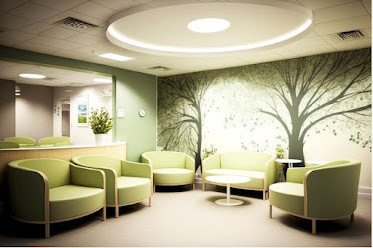
In the world of healthcare, functionality meets comfort in the design of medical facilities. Medical fitouts are the meticulous process of transforming a space into a fully operational medical practice. It goes beyond aesthetics, ensuring the space caters to patient needs, adheres to regulations, and fosters a smooth workflow for medical professionals.
Transform Your Vision into Reality: A Guide to Medical Fitouts in Sydney
Planning the Perfect Fitout: Key Considerations:
Understanding Your Needs: The first step is to identify your specific requirements. Are you a general practice, a specialized clinic, or a large-scale medical center? Each requires different layouts, equipment, and functionalities.
Compliance is King: Medical facilities are subject to stringent regulations regarding safety, hygiene, and accessibility. Partnering with a fitout company experienced in healthcare ensures compliance with local building codes and health department regulations.
Optimizing Workflow: A well-designed medical fitout streamlines patient flow and staff efficiency. This includes strategically placed examination rooms, nurse stations, and designated areas for sterilization and storage.
Creating a Welcoming Atmosphere:
While functionality is paramount, don't underestimate the power of a welcoming environment. Consider these elements:
Natural Light and Biophilia: Studies have shown that natural light and exposure to nature can reduce patient stress and anxiety. Large windows and elements like strategically placed plants can create a calming effect.
Patient Comfort: Invest in comfortable seating with ample legroom in waiting areas. Ensure proper temperature control and consider offering calming music or nature sounds.
Privacy and Confidentiality: Examination rooms should be designed to ensure patient privacy during consultations. Utilize soundproofing materials and strategically place furniture.
Pro Tip: Incorporate your brand identity through colors, textures, and artwork to create a cohesive and familiar environment for your patients.
Making the Most of Your Space:
Space optimization is crucial for medical fitouts. Here are some tips:
Multifunctional Rooms: Consider using modular furniture or movable partitions to create adaptable spaces that can cater to different needs.
Vertical Storage Solutions: Utilize wall-mounted cabinets and shelving to maximize storage space without compromising floor area.
Digital Integration: Investing in digital signage for displaying appointment schedules or educational materials can free up valuable wall space.
Navigating the Process: Partnering for Success:
A successful medical fitout requires a collaborative approach.
Seek Experienced Professionals: Partner with a reputable fitout company specializing in healthcare. They can guide you through the entire process, from design and planning to construction and equipment installation.
Open Communication is Key: Clearly communicate your vision, budget, and timeline to the fitout team. Regular communication ensures the project stays on track and meets your expectations.
Embrace Technology: Utilizing Building Information Modeling (BIM) software allows for 3D visualization of the fitout, aiding in design decisions and identifying potential issues before construction begins.
By carefully considering these aspects, you can turn the medical fitout process into a seamless experience. The result? A space that fosters patient well-being, optimizes workflow for your staff, and creates a thriving healthcare environment.
For more information about medical fitouts, medical fit outs, dental fitouts, dental fit outs, medical centre fitouts, please visit the - Commodore Fitouts / Location.
Reference taken from here.
COMMODORE FITOUTS LOCATION:
Name: Commodore Dental & Medical Fitouts
Address: 166 Arcadia Rd, Arcadia NSW 2159, Australia
Phone Number: +61 2 9655 1919
Website: http://www.commodorefitouts.com.au/
0 notes
Text
Elevate Your Space with Our Biophilic Design Services in the UK
In the ever-evolving panorama of layout, our enterprise stands out as a top-rated Biophilic Design Consultant, redefining indoor areas across the United Kingdom. With a commitment to fostering proper-being and sustainability, our Biophilic Design Services seamlessly blends the splendor of nature with modern design ideas.
Unveiling the Essence of Biophilic Design in the UK
As a Biophilic Design Consultant firm, we recognize nature's transformative energy in shaping our environments. Our Biophilic Design Services surpass traditional aesthetics and specialize in developing areas to beautify the connection between occupants and the natural international.
From residential havens to business areas, our understanding spans an extensive spectrum, ensuring each undertaking is a testimony to the therapeutic benefits of biophilia.
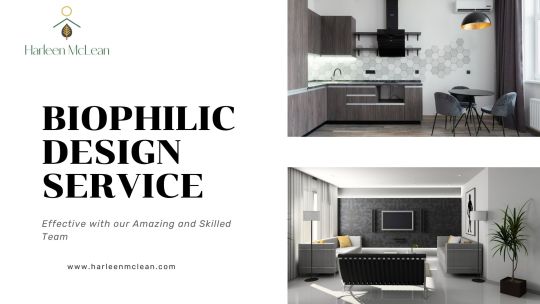
Why Choose Our Biophilic Design Services?
Expertise in Biophilic Principles: Our team of seasoned Biophilic Design service UK has a deep knowledge of the principles underpinning this progressive design technique. From incorporating natural mild to integrating greenery and using sustainable substances, our designs seamlessly merge the interior with the outside.
Tailored Solutions for UK Spaces: Recognizing the diverse architectural landscapes across the UK, our Biophilic Design Services are tailor-made to fulfill the particular desires of each client. Whether you are primarily based in the bustling cityscape of London or the serene geographical region, our consultants ensure that your space harmonizes with its surroundings, creating a bespoke experience.
Enhancing Well-Being and Productivity: Beyond the aesthetic attraction, our Biophilic Design Services UK prioritizes the elegance and productiveness of occupants. Numerous studies have shown that incorporating biophilic elements into areas can reduce strain, improve mood, and increase ordinary productivity. With our information, we intend to create amazing environments and contribute to a fit and happier way of life.
Sustainability: Our dedication to environmental responsibility sets us apart. As a Biophilic Design Consultant organization, we prioritize sustainability by utilizing green materials, imposing power-efficient answers, and embracing renewable energy sources. Each project displays our determination to develop designs that tread lightly on this planet.
Embark on a Biophilic Journey with Us
In a world where the city and the natural frequently appear at odds, our Biophilic Design Services UK bridges the space, creating spaces that encourage, rejuvenate, and join. Whether you envision a tranquil home retreat or an innovative office area, our Biophilic Design Consultants crew is here to turn your vision into a truth.
As pioneers within the realm of biophilic design consultant, we invite you to embark on a transformative adventure with us. Elevate your space, enhance your well-being, and embody the splendor of nature seamlessly integrated into your surroundings.
Choose our Biophilic Design Services, and permit your area to tell a story of harmony, sustainability, and undying elegance.
#Biophilic Design Consultant#Biophilic Design Services UK#biophilic restaurant design#sustainable office design#biophilic house design#biophilic office design
0 notes
Text
How do you incorporate biophilic design elements into a commercial interior project?
Incorporating biophilic design elements into a commercial interior project has become a popular trend in recent years and for good reason. Biophilic design, which emphasizes the connection between humans and nature, not only enhances the aesthetics of the space but also contributes to the well-being and productivity of occupants. In this blog, we will explore how to seamlessly integrate biophilic design elements into your commercial interior project while emphasizing relevant keywords associated with such projects.
1. Greenery and Plants:
One of the most obvious ways to infuse a space with biophilia is by introducing greenery. Incorporate potted plants, living walls, or vertical gardens to bring nature into your workspace. This not only enhances aesthetics but also improves indoor air quality and promotes a sense of well-being.
2. Natural Light and Views:
Maximize natural light and views to the outdoors. Large windows, skylights, and strategically placed mirrors can help bring the outside in. Natural light not only reduces the need for artificial lighting but also creates a connection to the outside environment.
3. Natural Materials:
Select natural materials like wood, stone, bamboo, and cork for flooring, wall coverings, and furniture. These materials evoke a sense of authenticity and contribute to a warm and inviting atmosphere.
4. Water Features:
Water elements, such as indoor fountains, ponds, or even a simple tabletop water feature, can create a soothing and calming ambiance, contributing to a sense of connection with nature.
5. Biophilic Color Palette:
Choose a color palette inspired by nature. Earthy tones like greens, blues, browns, and soft earthy neutrals can evoke feelings of tranquility and relaxation.
6. Nature-Inspired Patterns:
Incorporate nature-inspired patterns and textures in your design. Think of floral prints, leaf motifs, or natural stone patterns on surfaces and furnishings. These patterns can add depth and visual interest to your space.
7. Natural Ventilation and Air Quality:
Promote natural ventilation by designing spaces that allow for cross-ventilation and fresh air. High-quality air filtration systems ensure that occupants breathe clean and fresh air, enhancing overall comfort.
8. Nature-Inspired Artwork:
Consider artwork and decor that depict natural scenes or wildlife. Nature-inspired artwork can be both visually appealing and a source of inspiration for occupants.
9. Biophilic Furniture and Layout:
Choose furniture that mimics organic shapes found in nature, such as curvilinear forms and natural contours. The arrangement of furniture should promote a sense of openness and connection to nature.
10. Employee Engagement and Education:
Educate employees about the benefits of biophilic design and encourage them to engage with the natural elements in the workspace. Create designated spaces for relaxation or mindfulness that incorporate these elements.
11. Outdoor Spaces and Terraces:
Design outdoor spaces and terraces for employees to enjoy. These spaces can serve as extensions of the interior and offer a direct connection to the natural environment.
12. Sustainable and Eco-Friendly Practices:
Incorporate sustainable and eco-friendly practices into your project, such as the use of recycled and low-impact materials. These practices align with the principles of biophilic design and promote a healthier environment.
13. Biophilic Accents and Details:
Add biophilic accents and details like nature-inspired sculptures, organic shapes in architectural elements, and materials that evoke the essence of nature.
In conclusion, incorporating biophilic design elements into a commercial interior project is a holistic approach that can significantly enhance the quality of the workspace. By introducing greenery, maximizing natural light, using natural materials, and adopting biophilic color palettes, your project can create a calming, inspiring, and productive environment. The fusion of nature and design not only enhances aesthetics but also promotes employee well-being and performance, contributing to the overall success of your commercial interior project. In today's world, where people spend a significant portion of their lives indoors, integrating biophilic design elements can be a transformative choice. One can achieve these by getting in touch with the renowned design and build firm, such as Flipspaces, who can help you with the same.
0 notes
Text
In the dynamically evolving world of architectonics, one paradigm-shift that is rapidly defining the genre is the incorporation of Biophilic designs. This revolutionary concept in architectural design inspires spaces where humanity gracefully intertwines with nature. The seamless integration of living elements into functional spaces is pushing the boundaries of the architectural advancement.
The sweeping influence of Biophilia can be perceived in its unvarnished definition, which professes "love for life and the living world." Its relevance is being amplified now more than ever as an integral chapter for responsible, future-focused architecture.
The powerful narrative of Biophilic designs stems from its tangible benefits to human well-being. Transcending the enclosure of rigid brick and mortar, Biophilic designs serve to uplift the inhabitants' spirits while also contributing to sustainability drives.
Consequently, it's no surprise that Biophilia, as the new frontier for architectural advancement, is resonating with architects, contractors, manufacturers, and construction companies. They see its immense potential in creating spaces that balance aesthetics with environmental pragmatism.
The principle of vitality and nurturing underscores this architectural movement. Biophilic architecture champions the course for green buildings featuring lush vertical gardens, passive light management systems, weather-reflective structures, and resource-smart features.
Apart from the profound commitment to sustainability, the thrust factor for Biophilic designs is the improved productivity and lifestyle benefits it brings to the table. Ethereal building configurations inspired from natural landscapes, creating healthy abodes supporting wellness and mental tranquillity.
Biophilic designs truly are a vibrant testament of embracing zesty, natural aesthetics in modern architectural parlance. It brings in the imperishable allure of the outdoors into indoor spaces, fusing functionality with splendor.
Undoubtedly, Biophilic designs are the ideal projection of congruence between the environment and built habitats. So, in the realm of future architecture and construction where green is the new 'grey,' it is worth exploring the untapped potential of Biophilic designs.
As we step into the future, the integration of architecture with Biophilic designs represents a novel rendition of harmonising the whirl of progress with the tranquillity of nature. Striking this balance is no longer a fantasy but the central blueprint of architectural innovation. As we build forward, we're not just creating structures, but monuments infused with life, vibrant ecosystems embedded into our everyday living spaces.
In a time when sustainability is more than just a buzzword, the adoption of Biophilic design is an architectural advance in the right direction. It's a much-needed narrative that brings us overnight into a world where man, architecture, and nature happily coexist.
Given the benefits and demand for sustainable construction, it would be worthwhile to invest in Biophilic designs. It is certain to define the future, and this is just the beginning.
Title: "Biophilic Design in Future Architecture: Predictions & Progress"
Introduction
Biophilic design, as seen in the culminating trend in the present architectural landscape, is more than a fad, it's a movement drawing from the innate human attraction to nature and natural processes. As we look beyond the horizon of contemporary architectural practices, we can see a future promising more of these biophilic explorations. The marriage of architecture and ecology is not only sustainable but also therapeutic, embodying a new frontier of architectural advancement.
Predictions for Biophilic Design in Future Architecture
1. Urban Forests and Vertical Gardens
Urban areas are set to become more densely populated with an increasing demand for vertical living. The solution? Vertical gardens and urban forests, where
every high-rise building could be a mini forest, offering cleaner air for better lung health, absorbing CO2 emissions, and improving the overall urban landscape. We predict that this inclination towards green high-rises will revolutionize city living experience.
2. Bio-Responsive Buildings
Imagine buildings reacting to their environment, much like living organisms. By harnessing developments in responsive materials and bio-mimicry, structures in the future could adapt to different weather patterns, sunlight variations, or even the number of people inside them. Architects and designers will explore new sustainable materials and responsive systems, enabling buildings to have a more harmonious relationship with their environment and inhabitants.
3. Advanced Indoor Ecosystems
The idea of green indoor spaces will evolve beyond indoor plants and vertical gardens. We foresee the advance of indoor ecosystems that are self-sustaining, with integrated systems for water recycling, air purification, and food production. These ecosystems could potentially provide a significant portion of the building occupants’ daily food needs.
4. Technology Integration
No future forecast is complete without highlighting the role of technology. Advancements in AI and IoT will inevitably find their way into biophilic architecture, shaping a future where environmental sensors and smart energy systems could monitor and manage these bio-designed spaces, enhancing their sustainability and livability.
Insightful Implications
In the future, buildings won't just be static structures, they’ll be living, breathing entities - in rhythm with nature, occupants, and the wider environment. This transformative shift towards biophilic design signifies more than sustainable architecture; it symbolizes our return to living in harmony with nature. It may be the panacea for urban living challenges, aiding in health and well-being, and building resilience amid climate change.
Conclusion
Emerging from the cocoon of traditional architecture, the butterfly of biophilic design spreads its wings, promising profound advances in the architectural world. As architects and designers, we hold the power to shape this future, making our built environment healthier, happier, and symbiotically connected with nature.
SEO keywords: Biophilic design, Future architecture, Green high-rises, Bio-responsive buildings, Indoor ecosystems, Sustainable materials, AI in architecture, IoT in architecture, Health and well-being, Climate-change resilience.
"Are you ready to revolutionize your architectural design with the potent power of nature? Discover the transformative effects of Biophilic designs today! Unleash your potential and take the first step towards Architectural Advancement. Click here to get started!"
Start Your Digital Transformation Now!
Prediction:
As the world tackles increasingly pressing environmental challenges, the future of architecture is likely to be dominated by the new frontier of architectural biophilic designs. This innovative approach merges aesthetics with eco-conscious designs that align with humans’ innate inclination towards nature. We predict a future where cities aren't coated in concrete and glass, but instead, they are blending seamlessly with the nature that surrounds them. There will be an increase in residential and commercial structures that incorporate elements such as living walls, green roofs, natural light utilization, ventilation patterns that imitate wind flows, and building materials that mimic natural patterns—and not merely for the allure of novelty—but due to the recognition of their beneficial impact on human health and productivity.
Quote:
“In the sublime confluence of design and love for nature, architectural biophilic designs arise—ushering a new era where architecture doesn't conquer nature, but coexists with it. As we journey into the future, our cities will whisper the poetry of intertwining aesthetics and nature, declaring loudly—progress need not compromise the planet.
"
0 notes
Text
Inspirational and Artistic References

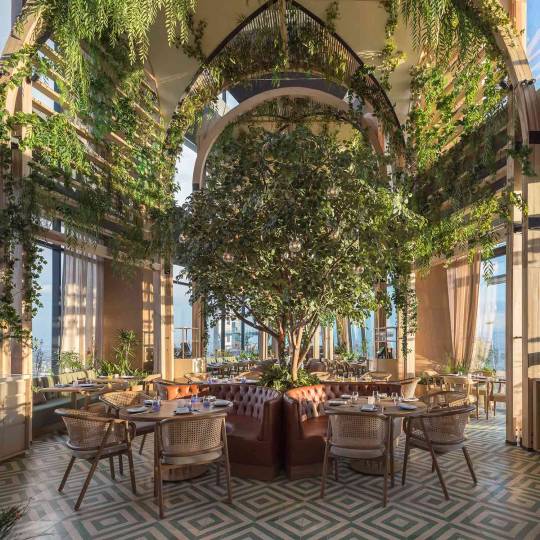
Humanity's desire to create meaningful connections with nature has persisted for thousands of years. Throughout history, our ancestors have worked to interweave the built and organic realms. But as the climate crisis increasingly impacts the construction industry, biophilic design is experiencing something of a renaissance.
Incorporating organic elements and processes into architectural practice can produce soothing spaces that enhance physical and mental well-being. Biophilic design can help reduce carbon emissions and propose natural solutions to improve air quality, regulate ventilation, temperature and noise, and manage stormwater. Architects are demonstrating increasingly innovative ways to incorporate the wisdom of nature into cutting-edge schemes.
These projects cleverly combine architecture and foliage in surprising and unexpected ways. Explore an exciting new blueprint for how living organisms can inspire future developments – that’s biophilia.
This bold conceptual design aims to transform a dark, moldy building in Vinh into a nature-focused wellness spa. The ambitious scheme uses modular concrete planters to adorn the facade, creating a striking and dynamic skin. Filled with greenery, the building will be reborn as a living, breathing ecosystem in the heart of the city.
A verdant atrium will be the thriving centerpiece of the refurbishment scheme, topped with skylights that dapple the treatment spaces with natural light. In this tranquil oasis, the hustle and bustle of the cityscape will fade into a distant memory.



As we all know, the so-called eight arts are social ideologies that reflect reality but are more typical than reality, including eight categories: literature, painting, music, dance, sculpture, drama, architecture, and film. However, with the development of society, various new carriers are constantly being produced, so the Ninth Art that is waiting for its place is being competed back and forth by various art fields. Before 2007, the competition for the Ninth Art mainly revolved around TV art and comic art.
In 2007, the FPS game BIOSHOCK developed by Irrational Games, with its excellent game quality and game connotation, almost immediately elevated the artistry of video games to the point where it could join the competition of the ninth art.
When I first played this game, I was shocked by the underwater utopia in the game. BIOSHOCK constructs a false but real utopia for players. This game has a sufficiently self-consistent world view setting and a unified art style. . This trilogy has always maintained a relatively unified art style, that is, retro-futurism, and this fusion of retro feelings and science fiction magic brings a unique artistic temperament to the game, this mixed atmosphere of illusion and reality. Triggered my thoughts and memories.
The retrofuturistic trend refers to the imitation of early futuristic design styles in contemporary art. This design style combines retro style with technological futuristic style, usually reflecting early artists' vision of the future, as a parallel to reality. Time and space are general.
The art styles included include steampunk and dieselpunk, and BISHOCK’s mechanical settings heavily use elements of these two styles.
As you can imagine, countless reinforced concrete buildings stand tall. Huge mechanical structures, spiral arms, gears, exposed pipes, and wires all reveal the power and brutality of technology. Heavy industrial-style buildings lack decoration but are full of power and beauty. They are a symbol of productivity and strong technology. However, on the streets, European-style low and simple shopping streets can be seen everywhere. The complicated carvings and rivet-reinforced decorations have very obvious symbols of the old times. This early art style combination is very suitable for The imagination of future technology is actually almost a distorted interpretation of real society. The bizarre steampunk world actually reflects the current living conditions of people everywhere.
BIOSHOCK's worldview also contains a lot of reflections on the development of science and technology. The technological development of the cities in the game is much higher than that of the real world. However, this deformed technology deteriorates sharply after it brings short-term benefits. The abuse of technological technology leads to chaos and war. Residents are driven crazy by biochemical products and have ambitions. Architects and scientists continue to produce creations that are far more terrifying than "Frankenstein". These creations made of machines and human bodies are actually a warning to the development of science. Such products that violate the laws of nature bring only fear and confusion.
youtube
youtube
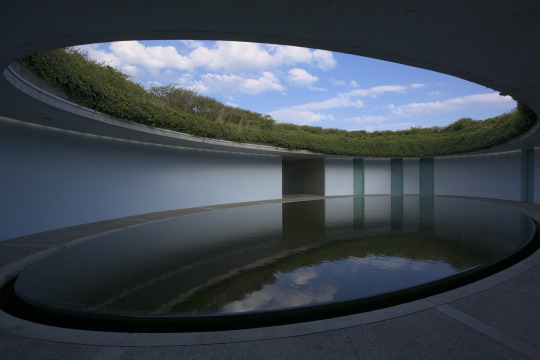

Naoshima Art Museum was designed by architect Tadao Ando. It is a semi-underground building with an interior display of paintings and sculptures from the 1960s to the present. The building blends in with its natural surroundings to create a tranquil and dynamic space.
The building is known for its unique and sophisticated architectural design. His design focuses on the natural environment, the flow of space and light, and harmonizes with the surroundings to create an immersive artistic experience.
This project highlights the integration of architecture with the environment. The design of the museum seamlessly connects the natural landscape with the building, making the museum part of the landscape rather than a separate entity. This integration demonstrates an attitude of design that is sensitive and respectful of the environment, which has influenced my thinking about designing with environmental considerations and integrating with the surrounding environment.The Naoshima Art Museum demonstrates the harmonious symbiosis of architecture, art, and nature, a concept that has had a profound effect on my design philosophy and has stimulated my interest in creativity, spatial design, and integration with the environment.
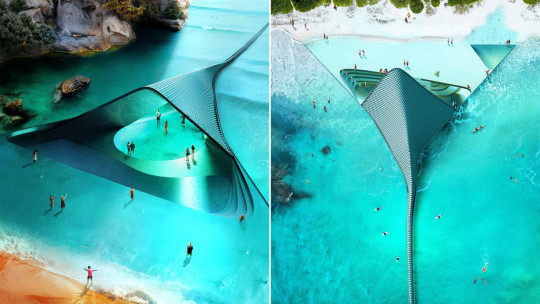

ANTIREALITY Designs Ocean Gate Underwater Observatory Concept for the Bahamas
The Observatory is an architectural concept that aims to create a "gateway" that opens the coast to the underwater world of flora and fauna. The object is located in the coastal area, creating a spatial connector between the beach and the sea. The aim of the project is to try to create a marine observatory whose structure will integrate well with the beach area without overwhelming the seaside landscape. The body of the building refers both to the form of the waves and to the biological species typical of the marine area. The structure of the Ocean Gate evokes a connection to the giant shells that separate the ocean waters in a smooth manner. The architectural shape is intended to encourage passersby to venture into the underwater realm.
Ocean Gate includes a water plaza that integrates the building with the beach, a shell that serves as a connector between the outside world and the ocean interior, a glass tube that serves as an observation space, and a structure that is completely submerged in seawater.
The streamlined shape of the building is not the only attempt to interpret the watery form, aiming to make the structure an integral part of the beach in harmony with its space. An important element that permits the introduction of a maritime nature is the exterior cladding, the only part of the building that appears above the water. The façade of the shell is covered with aluminum tiles whose metallic form references fish scales. The elements of the exterior cover reflect the surroundings, thus helping the object to be optically immersed in the sea basin.
The structure of the Ocean Gate consists of two basic parts: the shell and the tube. The load-bearing system of the shell consists of a steel frame whose shape corresponds to the façade structure that can be seen in the visualization. The tube is part of the object made entirely of glass and is supported by the steel frame. Its width varies with the depth at which it is located.
This architectural concept is in perfect harmony with the natural environment, as well as respect for the environment and ecology. Such a creative concept can inspire creative ideas in the field of architecture and design.
It reminds me to create a building that respects and integrates with the environment and is in harmony with nature. This integration is crucial for modern architectural design, especially when looking towards the future, where sustainability and environmental protection need to be considered. Secondly, the innovative nature of this concept has inspired me to be more daring and creative in my architectural design. It demonstrates the designer's abstraction of natural elements such as sea creatures and waves into architectural forms, and this creativity has inspired me to try to incorporate different natural elements into my designs in order to create a unique architectural experience.
Most importantly, this concept made me realize that architecture is not just an independent physical structure; it can be an ecosystem that interacts with the environment and nature. This new perspective is very important for the future of architectural design and sustainability, as we need solutions that are more environmentally friendly, integrate with nature, and are in harmony with ecology.
vimeo
"The Third & The Seventh" is a remarkable short digital art film, known for its brilliant visuals and masterful architectural design. Created by Alex Roman, it presents exquisite and stunning fictionalized architectural scenes and a high degree of attention to light and detail.
The architectural design in the movie is presented in a highly modern and artistic way. The geometric shapes and lines of the buildings are extremely clean and smooth, embodying the essence of modern architectural design. Through bold geometric structures and the perfect fusion of curves and straight lines, the designers create unique and charismatic buildings that give people a sense of the future and science fiction. This kind of architectural design fully embodies the pursuit of innovation and advanced technology, showing the diversity and creativity of modern architecture.
Secondly, the use of light and shadow in the movie shows the artist's superior technology and aesthetic vision. Light is carefully designed and utilized in the film to create a real and dramatic effect. The flow, change and projection of light and shadow make the buildings present a unique sense of three-dimensionality and hierarchy. In particular, the representation of the glass material demonstrates its high fidelity and reflection effect, making the buildings look more realistic and artistic.
In addition, the details in the movie are very delicate and rich. The artist pays attention to every detail of the sculpture, from the texture and material of the building to the accessories and small objects, all of which show a high level of quality and attention. These details make the whole scene richer and more vivid, and emphasize the precision and complexity of modern architecture.
At the same time it sparked my interest in digital art and architecture and gave me a deeper understanding of the intersection between these two fields. I began to explore how digital technology can be used to create more creative and avant-garde architectural designs, and how the beauty of modern architecture can be expressed through art.
It revealed to me the importance of light and shadow and details. The lighting effects in the movie were extremely subtle and made me start to pay more attention to the importance of light in architecture and art creation. In my work, I try to create more attractive and vivid scenes through the careful design and use of light.
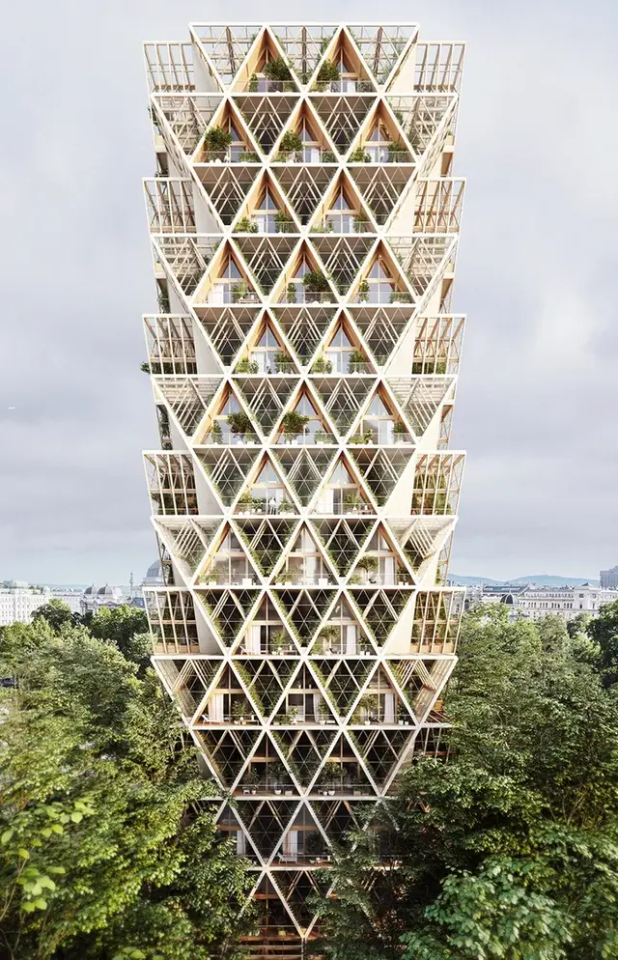

The spatial sequence of the building is formed by natural basic forms, circles, triangles, rectangles and even arches, which, after forming a rhythm, form a "whole" in themselves through organic organization.
This is a modular building developed by Studio Precht. The high-rise building is made up of simple A-modules, with a large number of planting spaces connecting the inhabitants with agriculture.
Each A-module can take on the dual function of living and growing, while the residents can design their own living space - there are a variety of builds to choose from: a growing unit, a waste treatment unit, a water treatment unit, a solar powered unit, etc.
This project is to consider the building as a part of nature, and to complete the interaction and integration with nature through the creation of planting space. Crops are growing, human beings are living, completing all the processes that living organisms need to go through in the cycle of the seasons, and at the same time, in this process, the building itself seems to be sent to life, completing its mission in the natural world.
In Chinese Taoism, there is the concept of "Taoism begets one, two begets two, two begets three, and three begets all things". In Chinese Taoism, there is the concept of "Tao begets one, two begets two, two begets three, and three begets everything". Life begins with a small cell, through a variety of organic combinations, the formation of a common role of organs, systems, and finally formed a living body. So my building will also adopt this naturalistic style.
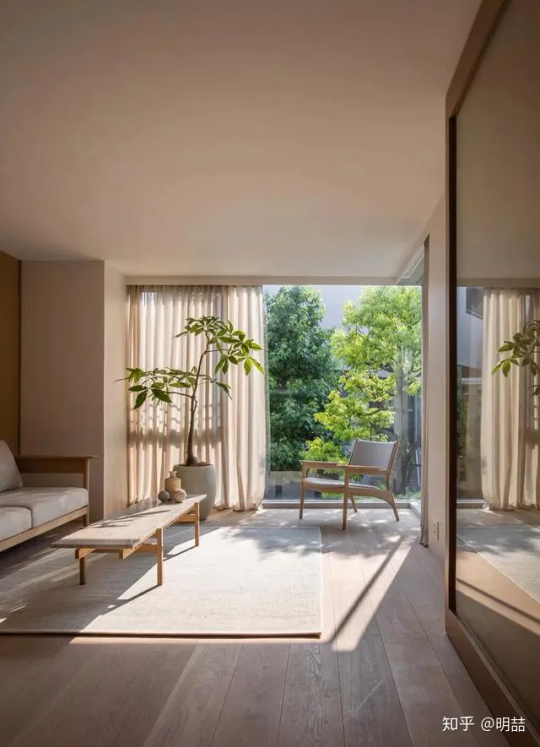
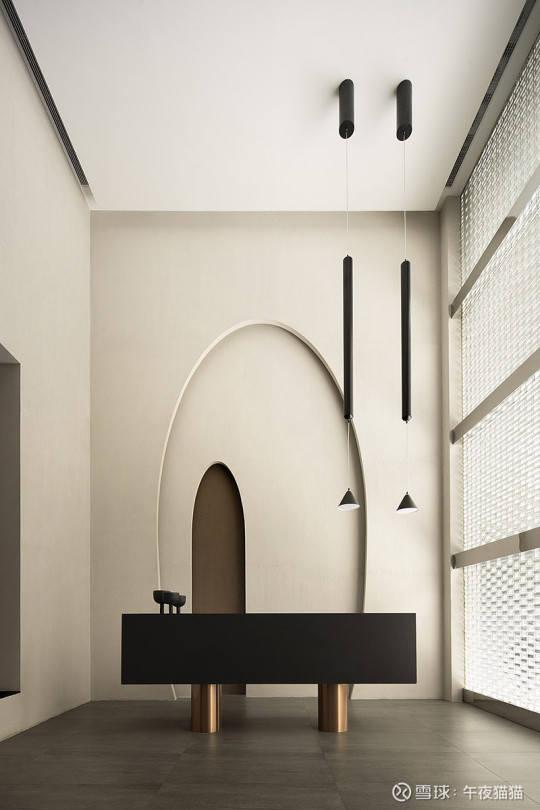
In Japanese style, returning to nature is the biggest feature. Whether in the design of color, function and shape, it pushes close to nature and emphasizes naturalism, so that users have the feeling of being in nature. In modern society, the pace of life is getting faster and faster, and the pursuit of material things has become the main goal of everyone. However, over time, the Wabi-sabi style, which emphasizes the aesthetics of nature and balance, came into being. The core concept of wabi-sabi style is minimalism and natural aesthetics. It advocates designing and decorating the home space according to the natural environment, so that the living environment closely follows the footsteps of nature, and combines the natural color texture of materials and the special scent of natural materials to give people a sense of returning to the basics and feeling at ease. In the wabi-sabi style home, there is no excessive furniture and decorations, everything is simple, natural and quiet wabi-sabi style through the combination of minimalism and natural aesthetics, so that people re-examine their own lives and hearts, the pursuit of true inner beauty. So if I want to create a building hidden in nature this style is very suitable.
NCaved is a 360 square meter vacation home located in a secluded little rocky cove on the island of Serifos, seemingly floating above sea level.
The architects decided to drill holes in the slope instead of building on the ground. A key concept for this building was the use of local materials, such as stone extracted from the plot. The use of raw materials for this building (stone, exposed concrete, wood and steel) enhances the impression of living in a natural space. The ruggedness of the materials is combined with the elegance of the details to create an environment that is simple yet warm, sophisticated and completely connected to nature.
0 notes
Text
How do commercial interior design firms in NYC approach the design of collaborative workspaces?
Collaboration is the lifeblood of New York City's bustling business landscape, and commercial interior design firms in NYC are masters at creating collaborative workspaces that inspire innovation and teamwork. In this blog, we'll explore the strategies these firms employ to approach the design of collaborative workspaces.
Dynamic Layouts
Commercial Interior Design Firms in NYC, Dynamic workspace layouts
Commercial interior design firms in NYC understand the need for flexibility. They craft dynamic layouts that allow for easy reconfiguration, ensuring that collaborative spaces can adapt to various team sizes and purposes.
Varied Seating Arrangements
Varied seating arrangements, Collaborative office design
Firms incorporate a variety of seating options, including open workbenches, lounge areas, and modular furniture. This diversity allows employees to choose the setting that best suits their collaborative needs.
Privacy Nooks
Privacy nooks, NYC collaborative spaces
While open collaboration is essential, privacy is also valued. Design firms create private nooks or enclosed meeting areas within collaborative spaces for confidential discussions or focused work.
Technology Integration
Technology integration, NYC tech-enabled workspaces
Incorporating technology is key. Design firms equip collaborative workspaces with advanced AV systems, interactive displays, and video conferencing solutions to support seamless communication and collaboration.
Flexible Meeting Rooms
Flexible meeting rooms, NYC collaborative meeting spaces
Firms design meeting rooms that can be easily adapted for different purposes. These rooms may feature movable walls, flexible furniture, and integrated AV equipment for presentations.
Biophilic Elements
Biophilic elements, Collaborative workspace biophilia
Biophilic design is embraced. Firms incorporate natural elements like plants, natural light, and outdoor views to create a calming and inspiring atmosphere that enhances creativity and collaboration.
Acoustic Solutions
Acoustic solutions, Collaborative office acoustics
Noise control is crucial. Design firms implement acoustic solutions like sound-absorbing panels, ceiling baffles, and acoustic furniture to reduce distractions and maintain a focused work environment.
Collaborative Tools
Collaborative tools, NYC workspace technology
Firms recommend and integrate collaborative tools such as interactive whiteboards, digital project management platforms, and cloud-based document sharing to facilitate teamwork.
Wellness-Centric Design
Wellness-centric design, Collaborative workspace well-being
Wellness is prioritized. Firms create collaborative spaces that incorporate elements like ergonomic furniture, natural materials, and access to wellness rooms or breakout areas for relaxation.
Employee-Centric Approach
Employee-centric approach, NYC collaborative workspace experience
Firms involve employees in the design process to understand their collaborative needs and preferences, ensuring that the workspace caters to their unique requirements.
Creative Inspiration
Creative inspiration, NYC collaborative work environment
Design firms infuse collaborative workspaces with elements that spark creativity, such as unique artwork, vibrant colors, and inspiring decor.
Community-Building Spaces
Community-building spaces, NYC collaboration zones
Creating spaces that foster a sense of community is a priority. Design firms establish areas where employees can gather, connect, and build strong working relationships.
Sustainable Practices
Sustainable practices, Collaborative office sustainability
Firms often incorporate sustainable practices into collaborative workspace design, using eco-friendly materials and energy-efficient lighting to reduce environmental impact.
Post-Occupancy Assessments
Post-occupancy assessments, NYC workspace evaluations
Many firms offer post-occupancy assessments to ensure that collaborative workspaces are meeting their intended objectives and make necessary adjustments based on employee feedback.
In conclusion, commercial interior design firms in NYC approach the design of collaborative workspaces with a holistic and employee-centric mindset. By creating dynamic layouts, incorporating varied seating arrangements, offering privacy nooks, integrating technology, embracing biophilic elements, providing acoustic solutions, recommending collaborative tools, prioritizing wellness, involving employees, inspiring creativity, fostering community, promoting sustainability, and conducting post-occupancy assessments, these firms ensure that collaborative workspaces are not just functional but also inspirational hubs for innovation, teamwork, and productivity in the dynamic corporate landscape of New York City. One can achieve these by getting in touch with the renowned design and build firm such as Flipspaces, who can help you with the same.
0 notes
Text
Biophilic Design in Architecture
Biophilic design in architecture is an approach that integrates natural elements into the built environment. The practice is based on the premise that humans have an innate connection with nature and that incorporating natural elements into the design can positively impact the well-being of people. We feel that Dean Larkin Design is a prime example of an organization that has embraced biophilic design principles. We love to incorporate nature into our designs, often choosing design features that incorporate natural light, open space, and water.

What is Biophilic Design?
Biophilic design is a relatively new concept that has gained popularity in recent years. The term refers to the integration of nature into architecture and interior design. The term “biophilia” was coined by the biologist E.O. Wilson in his book Biophilia and refers to the idea we mentioned; that humans have an instinctive and innate connection to nature. Biophilic design seeks to enhance that connection by incorporating natural elements, such as light, water, plants, and natural materials, into the built environment.
What are the Benefits of Biophilic Design in Architecture?
Biophilic design has been shown to have numerous benefits. The use of the natural elements has been linked to better physical health, cognitive function, and emotional well-being Biophilic design offers a number of benefits for businesses too. Studies have shown that biophilic design can lead to increased productivity, reduced stress levels, and improved employee morale. Biophilic design can also help to attract and retain top talent, and can improve the overall image of a business.
Dean Larkin Design’s Biophilic Design Approach
Our architecture and interior design firm specializes in luxury residential and commercial projects. The firm has a reputation for creating innovative and functional spaces that are also aesthetically pleasing. We want our clients to connect with and really enjoy their space. Creating spaces that promote a connection to nature and enhance the overall well-being of the occupants, or biophilic design, is in our DNA. Below are some of the ways we bring nature into our designs.
Natural Materials
One way that we incorporates biophilic design principles into our projects is through the use of natural materials. As a firm that loves contemporary design, we often use materials such as wood, stone, and glass to create a sense of warmth and connection to the natural environment. This approach can be seen in the firm’s Latimer project, where the use of glass, natural walnut, and aged oak floors and ceilings creates a modern aesthetic that merges seamlessly with the surrounding landscape. In fact, a “lake” appears to enter the house under the main stairs to further blur the boundaries between inside and outside.
Light and Motion
Another way we incorporate biophilic design principles is through the use of natural light. The firm often incorporates large windows and skylights into their designs to maximize the amount of natural light that enters a space. We also pay attention to the position of the sun in relation to the home and where residents will be at certain times of day. In our Faith Project in Yucca Valley, we positioned the house so that its occupants would get great views of the mountains. And the sun’s movement in the desert really reflects beautifully off of those mountains. This approach creates a sense of openness and connection to the surrounding landscape.
Another fun example of natural lighting in our Faith project is this skylight, that allows the sun to shine in a circle right at the doorway to the home. We just celebrated the Equinox at this project, which is still under construction.
Plants and Water Features
Dean Larkin Design also incorporates biophilic design principles into their landscaping designs. The firm often incorporates plants and water features into their designs to create a sense of tranquility and connection to nature. The use of plants in this design creates a serene and peaceful atmosphere.
Water features, inside and outside, also add to a feeling of tranquility. In the water feature pictured, plants line a privacy wall, and a river with walking stones surrounds the bathroom’s sunken tub. We think this lends a very private, luxurious, and peaceful feel to the bath area.
The final image above shows a zero edge pool, another water feature. In the right position, the home’s occupants get the luxury of a beautiful, cool pool while enjoying the amazing view from the home’s patio.
Contact Dean Larkin for Exceptional Contemporary Biophilic Design in California
If you are interested in learning more about biophilic design in architecture and indoor/outdoor design elements, we would love to hear from you. Dean Larkin Design was established in Los Angeles in 1999 and this modern architecture firm maximizes the intrinsic potential of a location, including its available natural light sources. Dean Larkin is very familiar with both historical and contemporary design in the entire Los Angeles area, and the firm endeavors to achieve a complexity that is multi-layered with an effortless elegance. For a design that is modern and innovative, unlocks your location’s innate potential by making specific use of light, views and more, and uniquely designed for the way you live, contact Dean Larkin for a consultation.
Blog is originally published at: https://deanlarkindesign.com/biophilic-design-in-architecture/
It is republished with the permission from the author.
#Biophilic design in architecture#Biophilic design#architecture in Los Angeles#Los Angeles architecture
0 notes
Text
Week 4: Slowly off the rail
So week 4 has past and looking at what I’ve done so far, I’m not satisfied but not stressing at the same time. Researching isn’t my strong point, so really I’ve been investing time and looking at countless readings, but I’ve felt like I haven’t done that much progress.
So what have I done?
I’ve been dedicating this week to my continued research on biophilic design, and biophilia in urban environments. The aim was to get around to look at regenerative design this week, but I haven’t done that yet. Instead I’ve spent time looking at a case study report of stakeholder perspectives of biophilic design in Singapore. What this report discusses is how biophilia is used within urban spaces, more specifically stakeholder corporate buildings located in the city of Singapore, the research goes into detail on biophilia in buildings, the increase in greener spaces has increased the appeal of the stakeholders. Whilst also going into the several ways different corporations incorporate biophilic design into their buildings which impact their work environment. Their is a common theme of stakeholders who side with the practice of biophilic design over biophilic urbanism, the difference between the two is one involves corporate spaces and is more cost effective (biophilic design), and the other creates a public area accessible to everyone, whilst enabling green clean design to be infused within the space, however at a higher cost rate (biophilic urbanism).
This is because biophilic design practices can be minor design changes to major ones, such as redesigning the window placement to oversee a river for example, which is why it is more favourable to stakeholders. As they have this flexibility to design for their workers around their environment , to increase their health benefits/ connection to nature.
So What does this mean ?
Knowing how biophilia design affects the perspectives of stakeholders proves to hold some substantial significance to my project and the understanding of biophilic design. As knowing which biophilic design strategies seem best can lead me into the right direction of an output that may have similar traits to what the stakeholders favoured. However one thing I have to remember is that they selected design practices best suited to their environment of Singapore, as I’m designing a space within Auckland I have to take that factor into consideration when looking at weather patterns and overall environment.
So what now ?
Well knowing how both environments are similar yet different in their own way, I’ll need to do some research on the environment of Auckland, what weather patterns are like and how existing buildings cater to our unique environment, I could look at natural species that adapt to Auckland’s environment, see what attributes I could carry over into the design of my project.
Overall, I’m dying I don’t know how much more research I can do, but we put in the hard yards now so we don’t have to worry about it later .

0 notes
Text
Examples: Urban Farming Office by Vo Trong Nghia Architects


Urban Farming Office is an architectural project by Vo Trong Nghia Architects designed for their own head office in Ho Chi Minh City, the architecture is a concrete-framed building covered in a "vertical farm" of vegetables, fruits and herbs. It is inspired by the lack of green from rapid urbanisation in cities of Vietnam which causes various social problems such as air pollution, droughts,... The core of the office building is constructed using an exposed concrete frame, while the planters themselves are supported by a shelving-like external structure of thin steel, allowing them to be flexibly rearranged as plants grow or swapped out entirely. (Astbury J, 2023) I like how the choice of concrete is consistent throughout the whole building, which compliments the greenery and dark wood office furniture. In a workplace setting where it can get intense and stressful, Vo Trong Nghia Architects’ biophilic approach to the building design has efficiently achieved serenity. Not only do the walls of plants act to filter sunlight and air, preventing overheating, the implementation of biophilia in the design also contributes to a boost of mental health, performance and wellbeing for employees.
0 notes
Text
Gardening for Health and Well-Being: How Gardening Can Improve Your Mental and Physical Health
Gardening is not just a hobby; it's a powerful tool for improving our overall health and well-being. Whether you have a sprawling backyard or a small balcony, cultivating plants and connecting with nature can have profound effects on both our mental and physical health. In this blog, we'll explore the numerous benefits of gardening and how it can positively impact our lives. So grab your gardening gloves, dig in the soil, and let's uncover the secrets of gardening for health and well-being.
Stress Reduction and Mental Well-Being: Gardening provides a therapeutic escape from the stresses of daily life. Here's how it promotes mental well-being:
a. Stress Reduction: Engaging in gardening activities, such as planting, weeding, or pruning, can reduce cortisol levels (the stress hormone) and promote relaxation.
b. Mood Enhancement: Spending time in nature and nurturing plants releases endorphins, the feel-good hormones, which can boost your mood and improve overall mental well-being.
c. Mindfulness and Meditation: Gardening offers an opportunity for mindfulness and being present in the moment. Focusing on the tasks at hand and observing the growth of plants can calm the mind and promote a sense of peace.
Physical Exercise and Fitness: Gardening is a physical activity that engages various muscle groups and promotes overall fitness. Consider the following:
a. Cardiovascular Health: Activities like digging, raking, or wheelbarrow pushing can provide a moderate-intensity cardiovascular workout, benefiting heart health and improving stamina.
b. Strength and Flexibility: Tasks such as lifting pots, carrying bags of soil, and reaching for overhead branches help improve strength and flexibility over time.
c. Low-Impact Exercise: Gardening is a low-impact exercise that puts less strain on joints compared to high-impact activities. It is suitable for people of different fitness levels and ages.
Connection with Nature and Increased Vitamin D: Gardening allows us to reconnect with nature and soak up the benefits of sunlight. Here's how it contributes to our health:
a. Vitamin D Production: Spending time outdoors while gardening exposes us to sunlight, which helps our bodies produce vitamin D. This essential vitamin supports bone health, boosts the immune system, and uplifts mood.
b. Biophilia Effect: Gardening nurtures our innate connection with nature, which has been shown to reduce stress, enhance cognitive function, and promote emotional well-being.
c. Nature Therapy: Being surrounded by greenery, listening to the sounds of birds, and breathing in fresh air can have a calming effect, reduce anxiety, and improve overall mental health.
Healthy Eating and Nutritional Benefits: Growing your own fruits, vegetables, and herbs can have a positive impact on your diet and nutrition. Consider these advantages:
a. Fresh and Organic Produce: Homegrown fruits and vegetables offer superior freshness and taste compared to store-bought counterparts. You have control over pesticides and can cultivate organic produce.
b. Nutrient-Rich Foods: Harvesting your own produce ensures you consume nutrient-dense foods packed with vitamins, minerals, and antioxidants necessary for optimal health.
c. Increased Vegetable Consumption: When you have a vegetable garden, you're more likely to incorporate a wider variety of vegetables into your meals, leading to a healthier and more balanced diet.
Social Interaction and Community Engagement: Gardening can foster social connections and a sense of belonging. Here's how it promotes social well-being:
a. Community Gardens: Participating in community gardening projects allows you to connect with like-minded individuals, share knowledge, and build friendships within your neighborhood.
b. Shared Experiences: Gardening with family members or friends creates opportunities for shared experiences, cooperation, and bonding, strengthening relationships.
c. Education and Learning: Joining gardening clubs or workshops exposes you to new gardening techniques, tips, and tricks. It's a chance to learn from experienced gardeners and expand your horticultural knowledge.

0 notes
Text
Independent projects|#19
Biodesign Learning 2


Biomimicry
Design and creation inspired by the forms, mechanisms and behaviours of living creatures. This type of work is often problem-oriented, requires clear functionality and requires the creation of a large number of prototypes for testing.
Bio-material
Combining sustainable social issues or moving from the laboratory to the industrial stage is currently a challenge for biomaterials, so better marketability or more reliable functionality can highlight the unique value of a project. Common biomaterials are: scopy, fungai, chitosan
Bio-narrative (Image 1
In the nascent stages of biodesign, many creators claimed that their work was the creation of bio-art in order to circumvent the complexities of ethical scrutiny. However, there is no denying that the values conveyed through biological work and the social consensus it fosters have had a very positive impact on the field, where practice is free and interdisciplinary and can be based on one's own experiences or on local ecosystems and cultural issues.
Ecology
A common theme is the exploration of the relationship between humans and nature
This theme can be narrative oriented.
(The Biophilia Hypothesis)
(Gaia hypothesis)
and Timothy Morton's ideas on ecology
Bio-informed design(Image 2
This is where the bio-inspired field differs from bionics in that it incorporates the organism or ecosystem itself into the solution and emphasises the value of the organic component.
Ref: Little Red Book @ JAY
0 notes